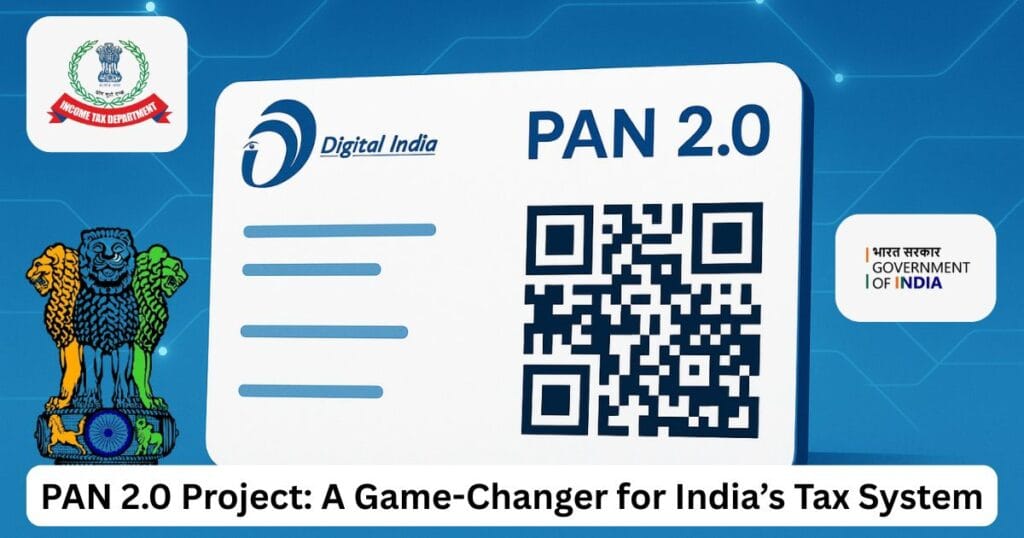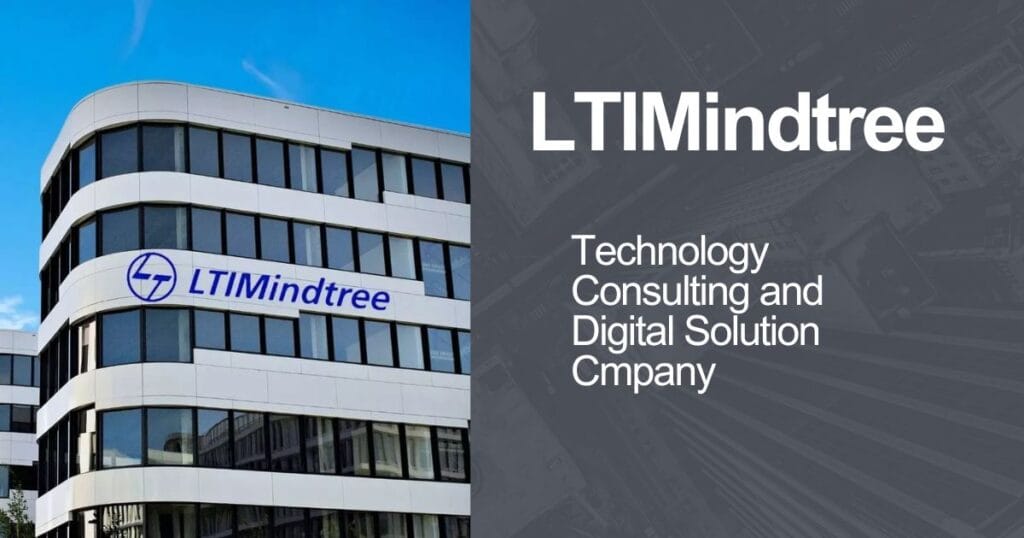The PAN 2.0 Project is a major initiative by the Indian government to modernize the Permanent Account Number (PAN) and Tax Deduction and Collection Account Number (TAN) systems. Launched by the Income Tax Department, this project aims to make tax-related services simpler, faster, and more secure. Approved by the Cabinet Committee on Economic Affairs (CCEA) in November 2024, PAN 2.0 introduces features like QR codes on PAN cards, enabling instant verification.

This project is a key part of the Digital India mission, designed to streamline tax processes and enhance user experience. In this article, we’ll break down everything you need to know about PAN 2.0 in simple language, including its goals, the limitations of the old system, new features, and benefits for taxpayers. Whether you’re a taxpayer or curious about this digital transformation, this guide is for you!
Purpose and Need for PAN 2.0
Purpose: Simplifying the Tax System
The main goal of PAN 2.0 is to bring all tax-related services onto a single online platform. Whether you need to apply for a new PAN card, update details, or link it with Aadhaar, everything will be available on one website. This system will be paperless, reducing paperwork and saving time. It aligns with Digital India, pushing India toward a more digital and efficient future.
Need: Why a New System?
The old PAN system was outdated for today’s digital age. It had issues like slow processes, errors, and weak security. With India’s growing digital economy, these problems were causing trouble for both taxpayers and the government. PAN 2.0 is designed to be fast, secure, and modern, addressing these challenges effectively.
Limitations of the Old PAN System
The old PAN system had several shortcomings that made it less effective:
- Multiple Platforms: PAN services were scattered across websites like UTIITSL and Protean, confusing users.
- Slow Processes: Applying for or updating a PAN card took days due to heavy reliance on paper-based work.
- Security Gaps: The old system lacked strong data protection, increasing risks of data theft or misuse.
- Lack of Integration: The system wasn’t fully linked with Aadhaar or other government databases, leading to errors and delays.
PAN 2.0 is built to fix these issues and create a seamless experience.
Highlights of the ₹1,435 Crore PAN 2.0 Project
Project Scale and Budget
The PAN 2.0 Project is massive, impacting millions of taxpayers across India. Its total budget is ₹1,435 crore, with ₹792 crore allocated to LTIMindtree, the company tasked with designing, developing, and implementing the system. The project uses AI and cloud technology to make it modern and scalable.
Funding and Timeline
Fully funded by the Indian government, the project was approved in November 2024. It’s expected to be completed in 18 months, with a full launch by February 2026. The rollout will happen in phases, starting with core services like PAN issuance and updates, followed by additional features.
Why Was LTIMindtree Chosen?

Company Background
LTIMindtree, formed by the merger of LTI and Mindtree, is a leading Indian IT company specializing in digital transformation, AI, and cloud services. It has a strong track record of handling large-scale government and private projects, making it a trusted choice.
Role in PAN 2.0
LTIMindtree is the primary contractor for the PAN 2.0 Project. Its responsibilities include:
- Designing the new system
- Developing the digital platform
- Implementing and maintaining it
The company will create a paperless and secure portal, ensuring a smooth experience for users.
Visit LTIMindtree Official SITE
Major Changes in PAN 2.0
New Technology
PAN 2.0 will use cutting-edge technologies:
- Artificial Intelligence (AI): Makes the system faster and smarter.
- Cloud Computing: Stores data online for easy access from anywhere.
- QR Codes: Every PAN card will have a QR code for instant verification.
Faster and Accurate Processes
The new system will be fully digital, reducing the time needed to issue or update PAN cards. QR codes will enable instant verification, and errors will be minimized.
Data Security
Security will be enhanced with:
- Encryption: Data will be coded to prevent theft.
- Biometrics: Integration with Aadhaar for secure verification.
- Fraud Prevention: Advanced tools to stop misuse.
Benefits for Taxpayers
Faster Processing
With PAN 2.0, applying for or updating a PAN card will take less time, with real-time processing.
Easy Online Access
All services will be available on a single website or mobile app, designed to be mobile-friendly for easy use on smartphones.
Fewer Errors
The system will reduce mistakes, making tax filing easier and less stressful for taxpayers.
PAN 2.0 Launch Timeline
When Will It Launch?
While some services may start in 2025, the full system is expected to launch by February 2026.
Phased Rollout
The project will roll out in phases:
- Phase 1: Core services like PAN issuance and updates.
- Phase 2: Features like Aadhaar linking and more.
Initial services may be available within the next 6 months.
Connection to Digital India
Strengthening Digital Governance
PAN 2.0 is a key part of the Digital India mission, making the tax system more transparent and efficient.
Integration with Other Schemes
The system will connect with Aadhaar, tax filing platforms, and schemes like RoDTEP, ensuring seamless coordination.
Challenges and Risks
Data Migration Risks
Transferring data from the old system to PAN 2.0 could lead to errors or data loss.
Technical Challenges
Implementing such a large system is complex. Issues like system slowdowns or scams (e.g., fake emails) could arise. Data privacy concerns may also emerge.
What Taxpayers Need to Know
Status of Old PAN Cards
Your old PAN card will remain valid. You don’t need to apply for a new one, but you can opt for a QR code-enabled card if desired.
What Should You Do?
- Avoid Scams: Stick to the Income Tax Department’s official website and beware of fake emails or sites.
- Prepare for Updates: Update your PAN details for free once the system launches.
- Stay Informed: Check official updates on the government website.
ALSO READ- E-Aadhaar to be Implemented Nationwide by End of 2025 with QR Code Verification
What is the PAN 2.0 Project, and how will it help taxpayers?
The PAN 2.0 Project is an initiative by the Indian government to modernize the Permanent Account Number (PAN) and Tax Deduction and Collection Account Number (TAN) systems. It aims to make tax-related services simpler, faster, and more secure by bringing them onto a single digital platform. For taxpayers, this means faster PAN card issuance, easy online updates, and fewer errors in tax filing. Features like QR codes on PAN cards will enable instant verification, and the paperless system will save time. This project, part of Digital India, will make the tax system more user-friendly and efficient.
Will my old PAN card remain valid after the PAN 2.0 launch?
Yes, your old PAN card will remain fully valid even after the PAN 2.0 system launches in February 2026. You don’t need to apply for a new PAN card unless you want to upgrade to a QR code-enabled PAN card for added convenience. The new system will allow you to update your details for free on the Income Tax Department’s official website, ensuring a smooth transition to the digital tax system. Always use official channels to avoid scams and keep your information secure.
When will the PAN 2.0 Project be fully launched, and how will it work?
The PAN 2.0 Project is expected to be fully launched by February 2026, with some services starting in 2025. The rollout will happen in phases: the first phase will include core services like PAN card issuance and updates, followed by features like Aadhaar linking. The system will use AI, cloud computing, and QR codes to make processes faster and more secure. All services will be available on a single online platform, accessible via a mobile-friendly website or app, making it easier for taxpayers to manage their tax system needs.
Conclusion: The Future of PAN 2.0
The PAN 2.0 Project will revolutionize India’s tax system. It will be faster, more secure, and user-friendly, reducing fraud and boosting the digital economy. For taxpayers, it means easier tax compliance and less hassle. For the government, it will improve tax collection and business efficiency.
Get ready for PAN 2.0—a step toward a modern, digital India! Share your thoughts in the comments below or subscribe to our newsletter for more updates.


